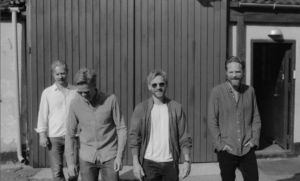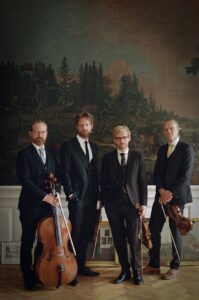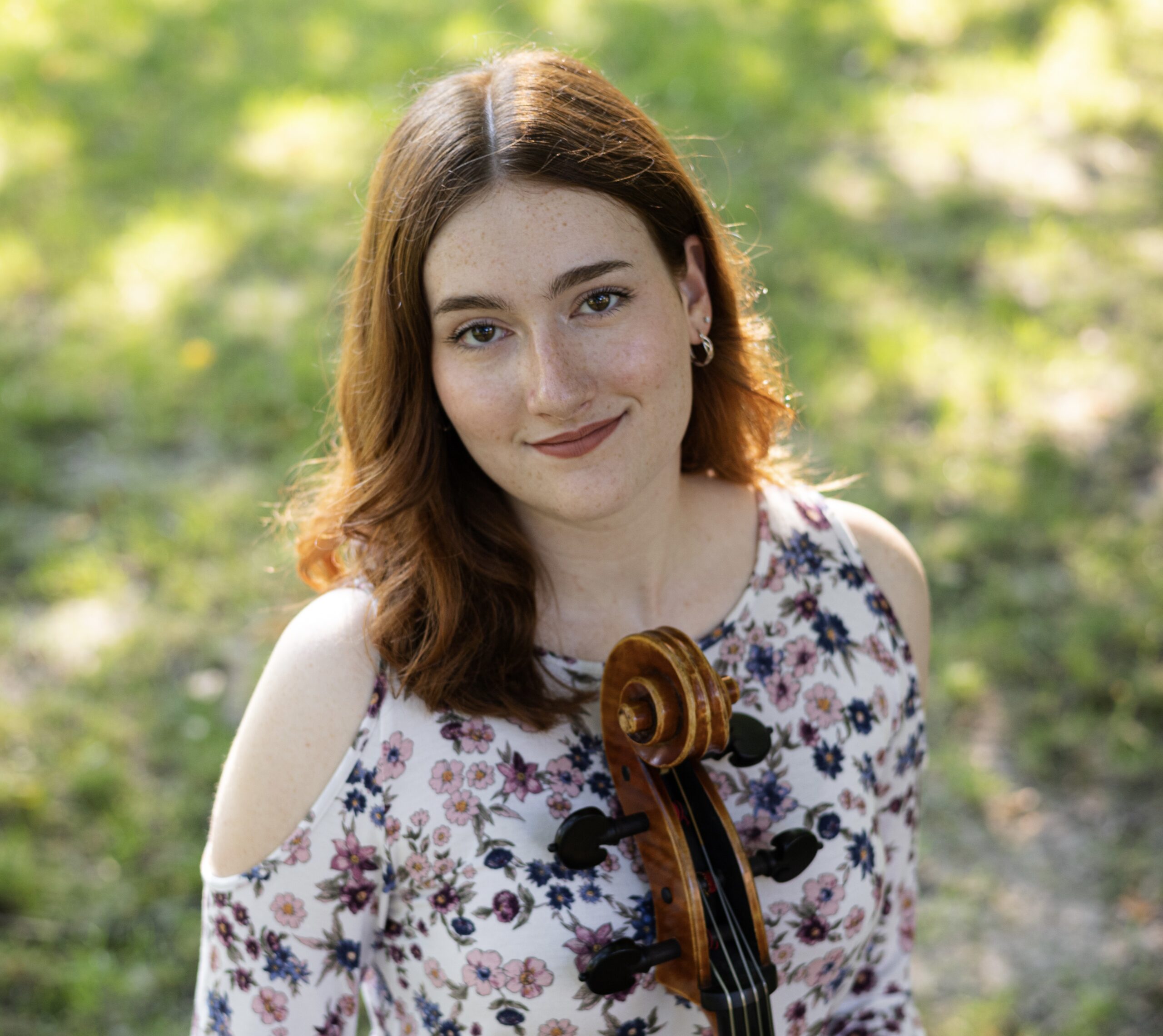The Danish Quartet at the Schermerhorn
Trust, friendship, and the magic of live chamber music were recurring themes in my interview with Frederik Øland of the Danish String Quartet, and I expected to witness nothing less in the group’s Schermerhorn debut on Monday, November 18th. I arrived at the symphony center expecting to hear a beautifully executed performance by a world-class quartet. I left two hours later feeling like I had witnessed so much more. The performance felt less like a formal event and more like four close friends sharing music with a genuine hope of connecting with everyone in the room. The Danish String Quartet’s performance brought infectious joy through expert musicianship.

They opened with Entr’acte by American composer Caroline Shaw, which flowed without pause into movement III (Andante) of String Quartet Op. 77, No. 2 by Joseph Haydn. This striking juxtaposition of music composed in 2011 and 1799 respectively let Danish firmly establish their interpretive and technical prowess. While it drew its inspiration from the Haydn work, the Shaw is abstract and textural—at crucial moments, the chords dissolve when the players intentionally let their bows skate over the strings without letting a note speak. The harmonies pulse apprehensively, the sustain through the ends of phrases to release a glowing sheath of overtones into the air. The brief work concluded with sparse pizzicato chords for the cello alone. Cellist Fredrik Schøyen Sjölin let the audience sit in this uncertainty before cueing first violinist Rune Tonsgaard Sørensen for the Haydn Andante. The mystique of Entr’acte dispelled, giving way to the Haydn’s warm, intimate atmosphere. The Haydn’s melodies were rich yet uncomplicated, inviting the audience into a comforting sound world evocative of friends gathered by the fireside.
After receiving applause, exiting, and returning to the stage, Frederik Øland traded with Mr. Sørensen to sit first violin, and violist Asbjørn Nørgaard introduced the next piece. He gave historical background for Quartet No. 4 in D Major, Op. 83 by Dmitri Shostakovich. It was composed in 1949, but it couldn’t be premiered until the death of Joseph Stalin in 1953. He explained that Shostakovich quotes traditional Jewish folksongs in the quartet, and that when he showed some of his composer friends the new work in 1949, they told him it would be extremely unsafe to play publicly due to the violent censorship at the time. Mr. Nørgaard said that this emphasis on folk songs went well with the Danish Quartet’s love of Scandinavian folk music, although he jokingly reassured the audience that their own music had nothing to do with an oppressive regime.
The music of Shostakovich is revered by chamber musicians of all skill levels for its high degrees of technical and interpretive difficulty, but Danish took it all in stride. They are frequently praised for their seamless blend, expertly crafted balance, and engaging musicianship, all of which were on full display on Monday night. As they performed the Shostakovich quartet, they were constantly watching each other, moving together, and playing with unshakable precision and calculated intention. From achieving a smooth, unified sound in the slow second movement, to scaling dizzying passages with ease in the quick third and fourth movements, they were not daunted by this work. The raw, unpretentious sound they achieved in the passages that referenced folk songs set the tone for their own folk music in the second half of the program to come. The Shostakovich was met with awestruck applause. With this great variety of music having been masterfully presented, the anticipation in the audience was palpable throughout intermission.

When the Quartet returned to the stage and greeted the eager audience, we all knew to expect the folk song arrangements for which the group is so often lauded. However, I doubt many audience members, myself included, knew exactly how transformative an experience it would be. There was something different about the group from the moment they took their seats. They looked around at each other as if to say, “The hard part is over – now we get to have fun!” The seriousness they had brought to the first half of the program was gone, and only eagerness remained.
Mr. Sørensen, first violin once again, introduced each folk song by name, origin, and importance to them as a group. The slow ballades carried a whimsical yet homesick beauty. The fast-paced tunes and jigs were giddy and energized. They swayed together, passed around grins, and bounced their feet to the music with abandon. The power of their collective musicianship was staggering. The music was simple compared to what had been presented earlier, but it carried a kind of humble equality. It was clear that no member of the four was any more or less important than the others at any moment—they were one instrument, unified by immediacy of blend and true musical understanding. The enraptured audience loved each selection more than the last, and we all tapped our feet right along with them. The final selection, comprised of two jigs and a Scottish reel, had the crowd dancing in our seats. They received a well-deserved standing ovation, and three bows later, they ended the night with a perfect, touching arrangement of Elvis Presley’s “Can’t Help Falling in Love.”
I have never seen a professional chamber group look so at home and at ease as they did when they began the first folk transcription. Their sound was fundamentally the same, with its characteristically pristine balance, cohesion, and intonation. However, everyone in the audience could feel the love in this music, and it was clear to us that Danish was playing straight from their hearts. I recall Mr. Ørland saying in our interview that some of his favorite music to perform was music that he felt “had a place for him in it.” I can confidently say that this musical sincerity was obvious in every moment of the performance. Congratulations to the Danish String Quartet for a wonderful performance and thank you for helping all of us find a place in your music!



